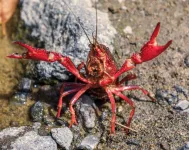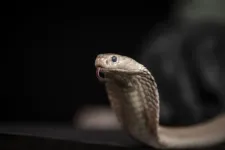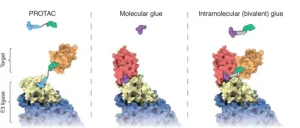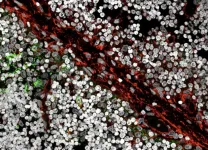(Press-News.org) The tendency of communities and the species within them to become more similar or more distinct across landscapes – biotic homogenisation and differentiation – are approximately balanced, according to a new study published in Science Advances.
Led by researchers at the German Centre for Integrative Biodiversity Research (iDiv) and the Martin Luther University Halle-Wittenberg (MLU), the researchers analysed 527 datasets collected from ecosystems like grasslands, shrublands, and coral reefs as far back as 500 years ago. The analysis is the first of its kind to provide a comprehensive assessment of how local and regional biodiversity changes combine across landscapes over centuries.
“We wanted to examine the idea that biotic homogenisation is a defining characteristic of the biodiversity crisis”, first author Dr Shane Blowes of iDiv and MLU says. “By combining a classic measure of scale-dependent biodiversity change with an unprecedented collation of data, we found that it is equally likely for communities to become more different through time in response to ongoing human impacts on the environment”.
No change means more than you think
The analysis integrated measures of change in the number of different species (species richness) present in a single site with changes occurring across multiple sites combined within a landscape or geographical region. This allowed the researchers to determine whether species composition was becoming more similar or different across sites.
They found no change in the spatial variation of species composition was the most common outcome. This was despite many instances of homogenisation and differentiation among communities over time. In fact, net trends in biodiversity change across scales were so weak that they were often indistinguishable from zero.
The data also showed a weak homogenising trend across larger regions over many hundreds of years due to increased numbers of widespread species in communities; however, this trend was balanced by the differentiation of communities at smaller scales. These findings were consistent across many life forms, from fish to birds to plants and mammals.
Studies on biodiversity change paint a complex picture, and researchers are often of two minds about how species’ responses to human-driven changes should be characterised. However, the concept of homogenisation remains a pervasive expectation in the scientific community and the wider public.
“Our analysis exposes the complexity of the issue”, Professor Jonathan Chase, senior author of the study and professor at iDiv and MLU, explains. “It doesn’t mean severe changes aren’t happening in the world, it means we need to move beyond a belief that homogenisation is the main way biodiversity is changing”.
Patterns for multiscale conservation
The researchers also present scenarios in their study that characterise changes in species occupancy: homogenisation is largely driven by increases in the average occupancy, whereas differentiation is driven by decreases in the average occupancy.
The scenarios make clear that even small changes in occupancy – due to landscape fragmentation via manmade roads or fences, the introduction of plants and animals to areas beyond their historic boundaries, and climate change, which can drive species to shift their range – can tip a community toward either homogenisation or differentiation.
The bright red Louisiana crawfish (Procambarus clarkii), which is native to northern Mexico and the southeastern United States, is an example of an introduced species that is flourishing in Germany’s freshwaters, driving homogenisation.
“We are seeing more and more that many threatened species require protection across multiple sites or at landscape scales to be effective”, Blowes adds. “A simple framework can help biodiversity management and conservation move to the multiscale approach needed to understand biodiversity change fully”.
END
Increasingly similar or different? Centuries-long analysis suggests biodiversity is differentiating and homogenizing to a comparable extent
A new analysis shows that while many biotic communities are becoming more similar through time, an almost equal number are becoming more distinct
2024-02-21
ELSE PRESS RELEASES FROM THIS DATE:
Long COVID linked to persistently high levels of inflammatory protein: a potential biomarker and target for treatments
2024-02-21
SARS-CoV-2 triggers the production of the antiviral protein IFN-γ, which is associated with fatigue, muscle ache and depression. New research shows that in Long COVID patients, IFN-y production persists until symptoms improve, highlighting a potential biomarker and a target for therapies.
A University of Cambridge-led study identifies the protein interferon gamma (IFN-γ) as a potential biomarker for Long COVID fatigue and highlights an immunological mechanism underlying the disease, which could pave the way for the development ...
Snaking toward a universal antivenom
2024-02-21
LA JOLLA, CA—Scripps Research scientists have developed an antibody that can block the effects of lethal toxins in the venoms of a wide variety of snakes found throughout Africa, Asia and Australia.
The antibody, which protected mice from the normally deadly venom of snakes including black mambas and king cobras, is described on February 21, 2024, in Science Translational Medicine. The new research used forms of the toxins produced in the laboratory to screen billions of different human antibodies and identify one that can block the toxins’ activity. It represents a large step toward a universal ...
New system triggers cellular waste disposal
2024-02-21
Living cells resemble highly organized small towns - in addition to energy production, transportation systems, and construction, cells also require efficient waste disposal. Most proteins, which shape and sustain cellular function, have only a limited half-life and must eventually be disposed of, along with defective and unwanted proteins. This vital task falls upon specialized enzymes known as ubiquitin ligases, which tag obsolete proteins for degradation, guiding them to the cellular recycling center, ...
Possible trigger for autoimmune diseases discovered : B cells teach T cells which targets must not be attacked
2024-02-21
Immune cells must learn not to attack the body itself. A team of researchers from the Technical University of Munich (TUM) and the Ludwig Maximilian University of Munich (LMU) has discovered a previously unknown mechanism behind this: other immune cells, the B cells, contribute to the "training" of the T cells in the thymus gland. If this process fails, autoimmune diseases can develop. The study confirms this for Neuromyelitis optica, a disease similar to Multiple Sclerosis. Other autoimmune diseases may be linked to the failure ...
Detecting pathogens faster and more accurately by melting DNA
2024-02-21
A new analysis method can detect pathogens in blood samples faster and more accurately than blood cultures, which are the current state of the art for infection diagnosis. The new method, called digital DNA melting analysis, can produce results in under six hours, whereas culture typically requires 15 hours to several days, depending on the pathogen.
Not only is this method faster than blood cultures, it’s also significantly less likely to generate false positives compared to other emerging DNA detection-based technologies such as Next Generation Sequencing.
Why ...
MD Anderson research highlights for February 21, 2024
2024-02-21
HOUSTON ― The University of Texas MD Anderson Cancer Center’s Research Highlights showcases the latest breakthroughs in cancer care, research and prevention. These advances are made possible through seamless collaboration between MD Anderson’s world-leading clinicians and scientists, bringing discoveries from the lab to the clinic and back.
Recent developments at MD Anderson offer insights into drug-drug interactions for patients with acute myeloid leukemia (AML) and myelodysplastic syndromes; patient-derived xenograft models as a viable translational ...
Engineers use AI to wrangle fusion power for the grid
2024-02-21
In the blink of an eye, the unruly, superheated plasma that drives a fusion reaction can lose its stability and escape the strong magnetic fields confining it within the donut-shaped fusion reactor. These getaways frequently spell the end of the reaction, posing a core challenge to developing fusion as a non-polluting, virtually limitless energy source.
But a Princeton-led team composed of engineers, physicists, and data scientists from the University and the Princeton Plasma Physics Laboratory (PPPL) have harnessed ...
UChicago scientists invent ultra-thin, minimally-invasive pacemaker controlled by light
2024-02-21
Sometimes our bodies need a boost. Millions of Americans rely on pacemakers—small devices that regulate the electrical impulses of the heart in order to keep it beating smoothly. But to reduce complications, researchers would like to make these devices even smaller and less intrusive.
A team of researchers with the University of Chicago has developed a wireless device, powered by light, that can be implanted to regulate cardiovascular or neural activity in the body. The featherlight membranes, ...
Accelerometer-measured physical activity, sedentary time, and heart failure risk in older women
2024-02-21
About The Study: The results of this study of 5,951 women ages 63 to 99 suggest that promoting regular physical activity and minimal sedentary time may be prudent for primary prevention of heart failure and its subtype with preserved ejection fraction for which treatment is limited.
Authors: Michael J. LaMonte, Ph.D., M.P.H., of the University at Buffalo—SUNY, is the corresponding author.
To access the embargoed study: Visit our For The Media website at this link https://media.jamanetwork.com/
(doi:10.1001/jamacardio.2023.5692)
Editor’s Note: Please see the article for additional information, including other ...
Lifetime suicide attempts in otherwise psychiatrically healthy individuals
2024-02-21
About The Study: In this study using data from 1,948 U.S. adults with lifetime suicide attempts from a nationally representative population-based survey, an estimated 19.6% reported not having met criteria for any psychiatric disorders prior to their first attempt. This finding challenges clinical notions of who is at risk for suicidal behavior and raises questions about the safety of limiting suicide risk screening to psychiatric populations.
Authors: Maria A. Oquendo, M.D., Ph.D., of the University of Pennsylvania in Philadelphia, is the corresponding author.
To access the embargoed study: Visit our For The Media ...
LAST 30 PRESS RELEASES:
Research on the behavioral mechanisms of rural distributed photovoltaic development: A view of prosumer perspective
More surgical patients are on opioid use disorder medications — hospitals must modernize pain care
New study reveals strategic logic behind global patent litigation venue selection
An abnormally slow heart rate is associated with xylazine-fentanyl overdose; primarily seen in northeastern United States
The path to solar weather forecasts
Inflammation and mitochondrial dysfunction in cirrhotic cardiomyopathy: therapeutic implications
The Great Bear Rainforest nature writing retreat
Research reveals hidden diversity of E. coli driving diabetic foot infections
Breakthrough in parallel Cartesian grid generation: Dynamic partition weight strategy resolves load imbalance
ESMT Berlin study shows how startups can communicate to win over silent audiences online
Design and optimization of wide-speed double swept waverider based on curved-cone projection method
Giant Magellan Telescope names Daniel T. Jaffe as president
New parameterization method for cislunar space cataloging enhances orbital awareness in Earth-Moon system
A “nu” way to measure researcher impact
Dark matter may have begun much hotter than scientists thought
Board games boost young kids’ math skills, UO research review shows
Unleashing floods: Researchers learn more about how fossils form
An open-source robotic system to perform cell culture tasks
Fathers’ health influences offspring through sperm RNAs
Korea University study mimics heart mechanics in organoids using three-dimensional magnetic torque
Catching a radical in motion with µSR spectroscopy
Hanbat National University researchers reveal smart transparent woods that block UV and save energy
Rhythm contains important information for the cell
Nitrogen is key to faster regrowth in deforested areas, say researchers
Recovering tropical forests grow back nearly twice as fast with nitrogen
A new diet option for mild-to-moderate Crohn’s disease
Electric vehicles could catch on in Africa sooner than expected
New test could help pinpoint IBD diagnosis, study finds
Common eye ointment can damage glaucoma implants, study warns
ACCESS-AD: a new European initiative to accelerate timely and equitable AD diagnosis, treatment and care
[Press-News.org] Increasingly similar or different? Centuries-long analysis suggests biodiversity is differentiating and homogenizing to a comparable extentA new analysis shows that while many biotic communities are becoming more similar through time, an almost equal number are becoming more distinct





